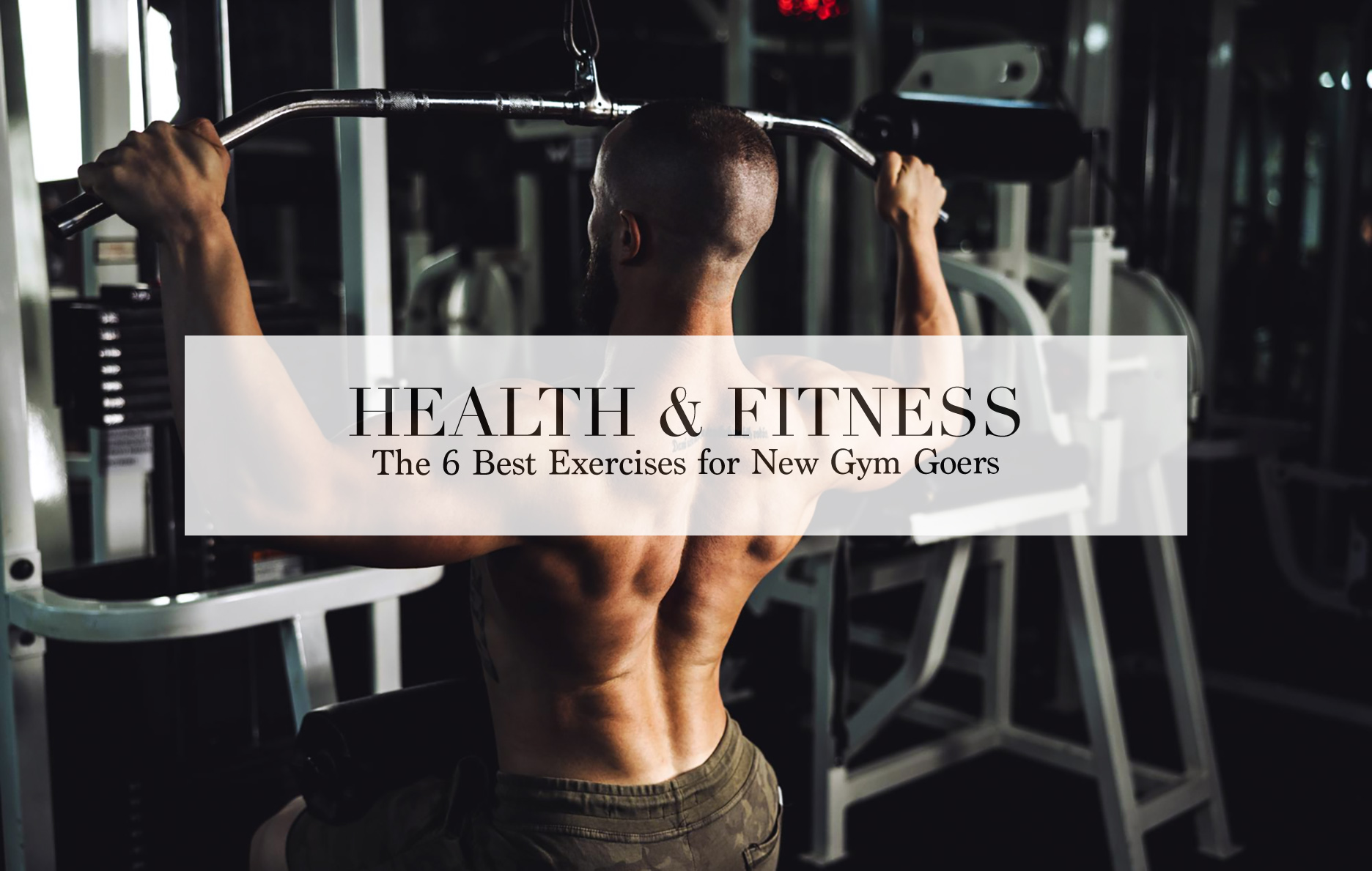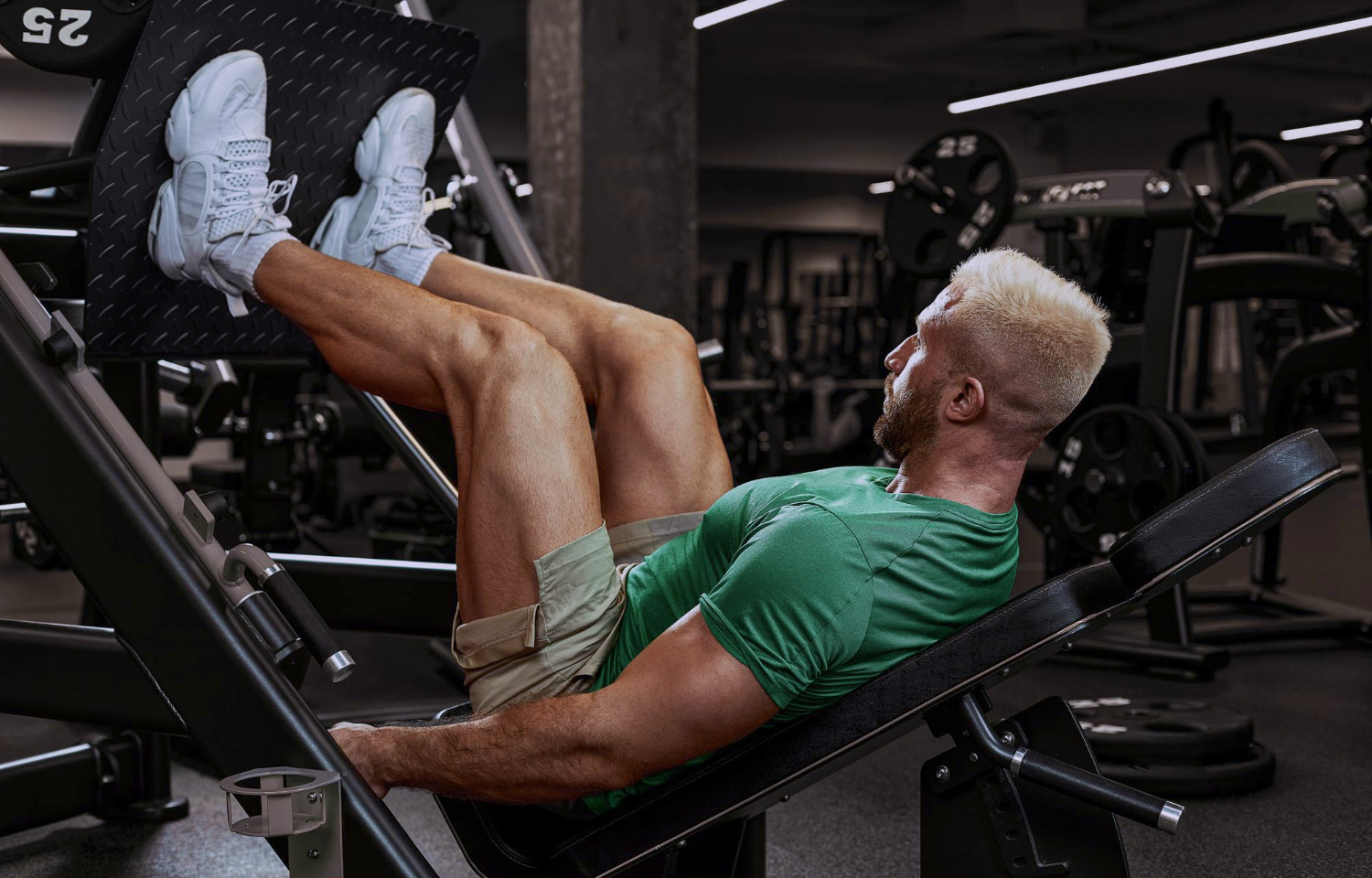First time in the gym? Unsure as to what exercises you should do as a beginner in the gym? With rows of intimidating machines and a cacophony of grunts and clanks, it’s easy to feel overwhelmed. However, fear not! With the right guidance and a solid plan, newcomers to the gym can ease into their workout routine and start seeing results in no time.
Before diving into specific exercises, it’s essential to understand some basic principles of fitness for beginners. Firstly, consistency is key. Rome wasn’t built in a day, and neither is a fit physique. Make a commitment to yourself to show up regularly and stick to your workout schedule. Secondly, listen to your body. While pushing yourself is essential for progress, it’s equally important to recognise when to rest and recover to prevent injuries. Lastly, don’t be afraid to ask for help. Whether it’s a gym staff member or a more experienced gym-goer, seeking advice can provide valuable insights and ensure you’re performing exercises correctly.
Now, let’s explore some of the best exercises for new gym-goers, covering various muscle groups to help you build a balanced and strong body.
1.Leg Press
The leg press is an excellent machine-based exercise for targeting the muscles of the lower body, including the quadriceps, hamstrings, glutes, and calves.The leg press is often chosen over squats for new gym-goers due to its reduced risk of injury, simplicity, and ease of use.
Unlike squats, which require mastering proper technique to prevent injury, the leg press machine provides a guided movement pattern that minimises risk, making it particularly suitable for beginners. Additionally, the leg press offers targeted muscle engagement with adjustable resistance options, allowing beginners to start with lighter weights and gradually progress as they gain strength and confidence. Its simplicity and stability can boost beginners’ confidence, providing a secure foundation for introducing them to resistance training. While squats remain an excellent compound exercise, the leg press offers a safer and more controlled starting point for beginners to build strength and familiarity with resistance training before advancing to more complex movements.
Sit on the leg press machine with your back against the pad and your feet placed shoulder-width apart on the platform. Push the platform away from your body by extending your knees and hips until your legs are almost fully extended but avoid locking out your knees. Slowly lower the platform back towards your body with control. The leg press provides a safer alternative to squats for beginners as it reduces the risk of injury and allows for easier control of form.
2.Machine Chest Press
The machine press, such as the chest press machine, offers several advantages over the barbell bench press, particularly for beginners. The machine’s guided movement reduces the risk of injury, as it assists in the movement pattern, minimizing the chance of improper form. With less need for stabilizing muscles, increasing weight on the machine press tends to be easier and safer. Additionally, the machine encourages a straighter, more neutral spine posture, with feet better planted on the ground, enhancing stability. A common mistake in pressing exercises is the failure to retract the shoulder blades throughout the movement, crucial for targeting the chest muscles effectively. By imagining holding a pen between the shoulder blades and focusing on maintaining this retracted position, the emphasis shifts to the pectorals, ensuring they remain in front of the shoulders throughout the range of motion, thus optimiasing chest muscle engagement while minimising strain on the shoulders.
However, it’s important to acknowledge the downsides of relying solely on machine chest press. One drawback is the lower activation of stabilizing muscles, which could hinder long-term development of the chest muscles if not addressed with supporting exercises that engage these stabilizers. Additionally, the machine press limits the range of motion compared to free weight exercises like the dumbbell press, which allows for full pectoral adduction, or the arms coming closer together. This limitation means that the pectorals may not achieve full contraction and activation, potentially impacting overall muscle development and strength gains.
When using the machine chest press, start by adjusting the seat height and grasping the handles at chest level. Ensure that your starting position does not have your elbows fully up in line with your shoulders, as this can emphasize the frontal deltoids over the pectoral muscles. Instead, aim to position your elbows slightly below your shoulders to target the chest effectively. Before pressing, retract your shoulder blades, maintaining this position throughout the movement. Push the handles away until your arms are slightly bent at the top, then return to the starting position with controlled motion. Focus on maintaining tension in the chest muscles throughout the exercise, aiming for a smooth and controlled range of motion.
3.Lat Pulldowns
The lat pulldown is an excellent exercise for beginners for several reasons. Firstly, it targets large muscle groups in the upper back, particularly the latissimus dorsi, which are crucial for overall upper body strength and posture. Secondly, the lat pulldown machine provides a guided movement pattern, making it easier for beginners to learn and perform correctly compared to free weight exercises. This reduces the risk of injury and allows beginners to focus on developing proper form and technique. Additionally, the lat pulldown can be easily adjusted to accommodate different fitness levels by varying the weight and grip width. This versatility makes it suitable for beginners who may be at different stages of strength and skill. Overall, the lat pulldown is a safe and effective exercise that helps beginners build a strong foundation of upper body strength and muscle coordination.
To perform the lat pulldown, sit at the lat pulldown machine with your thighs securely positioned under the pads and your feet flat on the ground. Grasp the bar with your hands slightly wider than shoulder-width apart, palms facing away from you, ensuring your wrists remain relatively straight throughout the range of motion. Before pulling the bar down, retract your shoulder blades to engage the back muscles fully. Pull the bar down towards your chest by driving your elbows down and back, focusing on squeezing your shoulder blades together at the bottom of the movement. Slowly release the bar back up to the starting position with controlled motion, allowing your arms to fully extend without locking out the elbows. Aim for a smooth and controlled range of motion, maintaining tension in the back muscles throughout each repetition. This wrist position ensures that tension is transferred away from the wrists and down towards the elbows, ultimately engaging the lat muscles more effectively.
4.Seated Cable Row
The next exercise in our routine is the seated cable row, a compound movement that targets the muscles of the upper back, including the rhomboids, traps, and rear deltoids, as well as the biceps. The cable row is an excellent exercise for beginners for several reasons. Firstly, it targets multiple muscle groups in the upper back, including the rhomboids, traps, and rear deltoids, as well as the biceps. This comprehensive engagement helps beginners develop overall upper body strength and muscle coordination. Secondly, the cable row machine provides a guided movement pattern, making it easier for beginners to learn and perform correctly compared to free weight exercises. This reduces the risk of injury and allows beginners to focus on developing proper form and technique. Additionally, the cable row can be easily adjusted to accommodate different fitness levels by varying the weight and grip width. This versatility makes it suitable for beginners who may be at different stages of strength and skill. Overall, the cable row is a safe and effective exercise that helps beginners build a strong foundation of upper body strength and muscle coordination.
To perform the row, sit on the rowing machine with your feet securely planted on the footrests and your knees slightly bent. Grasp the handles with an overhand grip, keeping your back straight and your core engaged. Initiate the movement by retracting your shoulder blades and pulling the handles towards your torso, focusing on squeezing your shoulder blades together at the end of the movement. Stick your chest out as you pull in, as this will help engage the back muscles more effectively. Keep your elbows close to your body and avoid using momentum to complete the row. Slowly release the handles back to the starting position with controlled motion, maintaining tension in the back muscles throughout each repetition. Aim for a smooth and controlled range of motion, ensuring proper form to maximise muscle engagement and prevent injury.
5.Deadlifts
The deadlift is a fundamental compound exercise for beginners that targets multiple muscle groups, including the hamstrings, glutes, lower back, and traps. However, there are several key points beginners should be mindful of when performing the deadlift. Firstly, proper form is essential to prevent injury, so beginners should focus on maintaining a flat back and keeping the chest up throughout the movement. It’s crucial to avoid rounding the back or letting the shoulders hunch forward, as this can strain the lower back and increase the risk of injury.
Secondly, beginners should start with light weights and gradually increase the load as they gain strength and confidence. Rushing to lift heavy weights before mastering proper form can lead to injury, so it’s important to prioritise technique over weightlifting prowess. Lastly, beginners should be cautious of their grip strength and avoid using an overhand grip with heavy weights, as this can put excessive strain on the forearms and increase the risk of grip fatigue or even dropping the weight. Instead, using a mixed grip or straps can provide additional support and stability when lifting heavier loads.
To perform the deadlift, stand with your feet hip-width apart and the barbell positioned over the middle of your feet. Bend at the hips and knees to lower your body towards the barbell, keeping your back flat and your chest up. Grip the barbell with your hands shoulder-width apart, palms facing down. Engage your core and drive through your heels to lift the barbell off the ground, keeping it close to your body throughout the movement. Once you’ve reached a standing position, reverse the movement by hinging at the hips and bending the knees to lower the barbell back down with control. Aim for a smooth and controlled range of motion, avoiding any jerky or sudden movements to prevent injury. It’s essential to start with light weights and focus on mastering proper form before gradually increasing the load.
6.Machine Shoulder Press
The seated machine shoulder press offers several benefits for beginners compared to free weights, particularly in terms of safety and ease of use. The guided movement pattern of the machine reduces the risk of injury, making it an ideal starting point for beginners who may be unfamiliar with proper technique or lack stabilizing strength. Additionally, the machine provides a more controlled range of motion, allowing beginners to focus on targeting the shoulder muscles without worrying about balancing or stabilizing the weight. However, while the machine press can be a valuable tool for building strength and muscle endurance, it’s important for beginners to eventually progress to free weights to improve overall stability and functional strength.
To perform the seated machine shoulder press, adjust the seat height so that the handles are at shoulder level. Sit with your back against the pad and your feet flat on the ground. Grasp the handles with an overhand grip and push the handles upward until your arms are fully extended, but avoid locking out at the peak of the movement. Slowly lower the handles back down with controlled motion, aiming to bring your elbows to a 90-degree angle at the bottom of the movement to avoid excessive stress on the shoulder joints. Focus on maintaining tension in the shoulder muscles throughout each repetition, and avoid using momentum to complete the exercise. By mastering proper form and technique, beginners can effectively target the shoulder muscles while minimizing the risk of injury.



